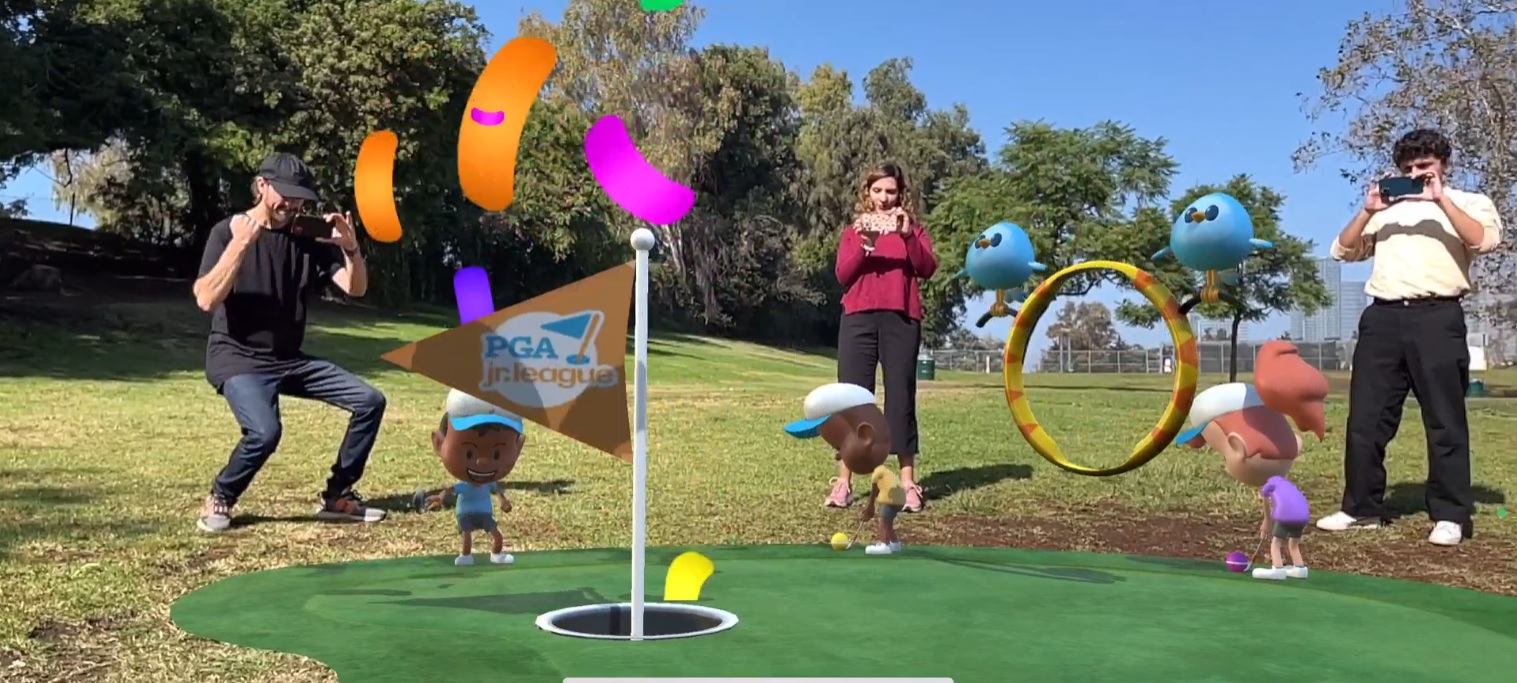
Top 8 Uses for Augmented Reality
Augmented reality (AR) is a technology with a dizzying range of potential applications. And as new and more powerful AR hardware enters the market (such as Apple’s mooted glasses), we’re likely to see even more uses for AR.
That’s not to say that AR, as it exists today, is any slouch, and to prove it we’re looking at eight of the best uses for augmented reality.
Virtual try-ons
The retail industry has been one of the most prominent embracers of AR technology over at least the past decade. Most of the industry’s biggest brands offer some form of the technology, which allows prospective buyers to see how a product would look on them without needing to physically try it on, usually utilising the ubiquitous phone camera to display the virtual elements in real-time.
Prominent virtual try-on examples include make-up from Maybelline, clothing from ASOS and Zeekit, and shoes from Vyking.

Gaming
Augmented Reality has found a natural home in the gaming industry, where it has powered some huge mobile game successes including Pokemon Go and Pikmin Bloom, both from developer Niantic.
Pokemon Go in particular was a smash hit, peaking at over 250 million players per month on the back of an experience that transported the gameplay of the popular Pokemon video game series to real-world locations. That built on work the developer had done in its previous game Ingress, which allowed players to use their mobile phones to interact with virtual portals appearing in real-world locations as part of its science fiction story.
Construction
AR is a key tool in the construction industry, from the design stage right through to the actual building process. For architecture, numerous tools exist to aid in the visualisation of spaces, such as The Wild, which allows designers to view 3D models in both virtual and augmented reality.
On the building side of the equation, AR has uses ranging from training workers on safety to progress capture and tracking functionality that directly compares real-world sites with virtual models in real-time to ensure they aren’t deviating.

Surgery
The high-stakes field of surgery is being revolutionised by augmented reality technology which can overlay vital information onto a surgeon’s field of view as they work. Mixed reality headsets such as the Microsoft HoloLens 2 allow surgeons to operate on patients more effectively, blending the real world with projections of computed Tomography (CT), and Magnetic Resonance Imaging (MRI) scans of the patients.
Holographic representations of the area being operated on can also be observed in 3D before surgery takes place to ensure a surgeon has full familiarity of the area they are working on. To find out more about the role of AR in healthcare, read our article on the subject.
Navigation
The tricky business of finding your way around busy spaces has been much improved with the help of AR, such as the Live View feature offered by Google Maps, which takes existing data from the map app and overlays it on the camera’s view of the real world with help from your phone’s GPS capabilities.
Individual locations have also explored using augmented reality to help guide visitors, such as Gatwick Airport, which installed navigational beacons that guide a passenger’s way back in 2018 – all accessed via a smartphone app.

Education
From a school setting to on-the-job training, AR can be used to help learners safely interact with materials they would otherwise not be able to gain access to, all while remaining in a familiar setting. Google debuted augmented reality search during the COVID-19 pandemic to help people learn by placing virtual objects such as spacesuits and animals into real-world locations. A host of apps exist to bring similar objects into a classroom setting, including the Merge Cube, which adds tactility to the experience.
Energy giants such as Shell, meanwhile, are using AR to educate workers in the field by bringing in experts who can see through a worker’s eyes and even draw on the screen of the augmented reality display they are using, boosting safety as they interact with potentially dangerous heavy oil and gas equipment.
Design
Designers at all levels are making use of AR to preview how a space will look before any changes are made physically, from those designing individual rooms all the way up to those planning cities.
Non-professionals too can make use of augmented reality to aid in their designs. Just one example is furniture store IKEA’s IKEA Place app which allows users to place 3D models of the company’s goods into their own rooms in order to preview how they would look, automatically scaling them based on the room’s dimensions to ensure they are true to life.

Manufacturing
AR is one of the key pillars underpinning the phenomenon of Industry 4.0, alongside such technologies as machine learning and big data. Consultants PwC has estimated that industrial manufacturing and design is one of the biggest potential areas for augmented and virtual reality, with their use in the industry having the potential to deliver a $360bn GDP boost by 2030.
As a result, examples of the technology in action for manufacturing are easy to come by. One example is Boeing’s use of augmented reality to give technicians real-time, hands-free, interactive 3D wiring diagrams. Lockheed Martin also utilised augmented reality in the creation of NASA’s Orion Spacecraft, overlaying information to help with mission-critical procedures such as precisely aligning fasteners.
This content was originally published here.


